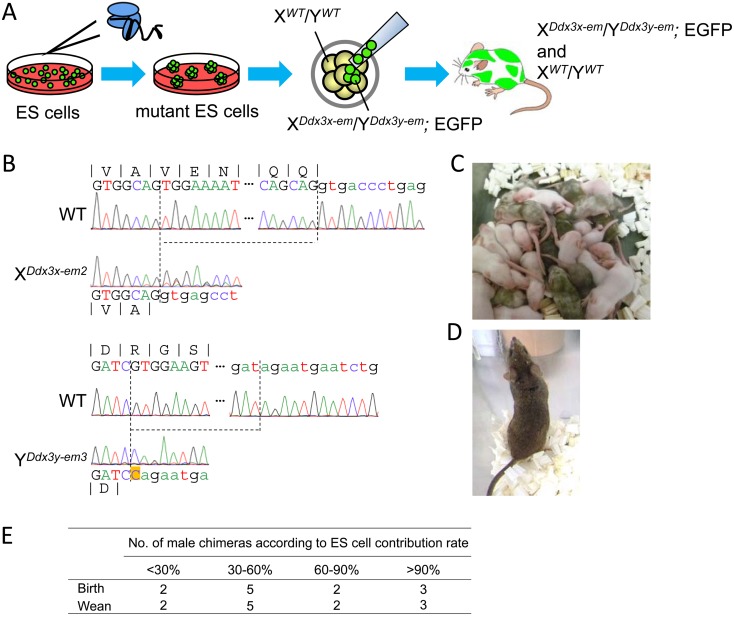Fig. 3.
Establishment of the Ddx3x and Ddx3y double KO ES cell clones using CRISPR/Cas9 system. (A) Schematic of chimeric male mice generation containing Ddx3x and Ddx3y double KO cells (EGFP positive). The image is adapted from ref. [29]. (B) (Upper region) Genomic sequence of wild-type and Ddx3x KO (XDdx3x-em2) alleles; 29-bp is deleted (dashed lines). (Lower region) Genomic sequences of wild-type and Ddx3y KO (YDdx3y-em3) alleles; 125-bp is deleted (dashed lines). Orange box in Ddx3y-em3 allele indicates 1-bp (cytosine) insertion. Exons are in upper case letters and introns in lower case. (C) Male and female chimeric pups and ICR pups delivered from foster mothers. ES cell contribution is judged by coat color of mice: agouti (ES cells) and white (ICR). (D) Adult male chimera with more than 90% of coat color derived from ES cells. (E) Viability of male chimeras from various ES cell contribution rates. All 13 chimeras are viable after 4 weeks of age (wean) with a high contribution of ES cells.

